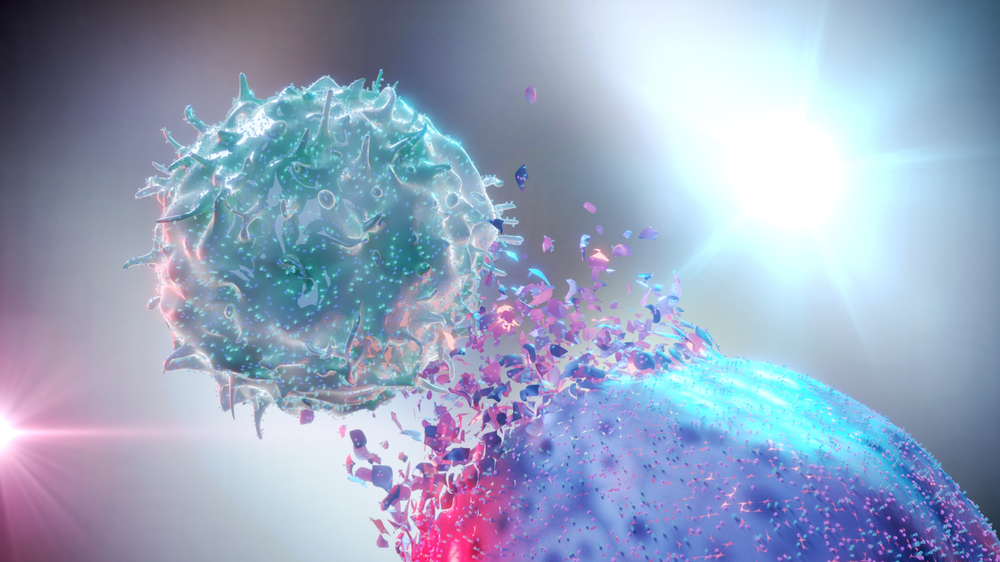Chimeric antigen receptor T cell (CAR-T) therapy is a novel cellular immunotherapy method that introduces chimeric antigen receptors and costimulatory molecules targeting specific targets into T cells by gene editing technology. Tumor cells expressing the target antigen are bound under non-primary histocompatibility complex (MHC)-dependent conditions, and T cells are activated by costimulatory molecules for killing. At present, CAR-T cells have shown good effects on various hematological tumors and partial solid tumors such as acute lymphoblastic leukemia (ALL), B-cell lymphoma (B-NHL), and multiple myeloma (MM). But it also brings many adverse reactions, the most serious of which is cytokine release syndrome (CRS). CRS is a syndrome in which CAR-T activates and kills tumor cells in vivo, releasing a large number of inflammatory factors leading to a series of clinical manifestations.
CRS is an acute adverse reaction that is more common in CAR-T treatment. Its clinical manifestations are diverse and can involve various systems of the whole body. The most common manifestations are fever, hypotension and neurological symptoms. When the single-chain antibody variable region fragment (scFv) of CAR-T cells contacts the target antigen, CAR-T cells are proliferated and activated in a short time under the activation of the intracellular structure CD3ζ/FcεRIγ and the co-stimulatory molecule CD28/CD137 dual signal. A large number of interleukin (IL)-6, IL-10, tumor necrosis factor (TNF)-α, interferon (IFN)-γ and other cytokines are secreted, and IL-6 levels are most obvious, which causes a severe immune response. In addition, under the stimulation of CAR-T secreting cytokines and direct contact with target cells, immunocytes including macrophages, monocytes, dendritic cells and natural killer (NK) cells are also activated, releasing inflammatory factor, which are directly or indirectly involved in the inflammatory process.
In general, the severity of CRS is related to tumor burden, target antigen density, and the number of infused CAR-T cells. Studies have shown that the greater the tumor burden, the greater the probability of CRS after CAR-T treatment, and the severity is also significantly higher than patients with low tumor burden, so pre-treatment with a certain chemotherapy regimen before CAR-T treatment to reduce tumor burden, not only can improve the efficacy, but also reduce the risk of CRS. The target antigen density affects the activation of CAR-T cells. The lower the target antigen density, the less activated CAR-T cells in the same time, resulting in relatively poor efficacy and a decrease in the incidence of severe CRS. Therefore, it is important to choose the right target to balance the relationship between the two. At present, the amount of CAR-T cell infusion is mostly 105~107/kg. Within a certain range, the number of infused cells directly affects the therapeutic effect and the severity of CRS. The greater the infusion volume, the more CAR-T cells are activated in vivo at the same time, the higher the cytokine level, and the better the curative effect, but at the same time the higher the risk to severe CR.
CRS is mainly treated symptomatically. If necessary, it can be treated with auxiliary breathing, booster drugs, antibiotics and blood products. Totizumab and enamel glucocorticoid are commonly used drugs for the treatment of CRS. At present, because most CAR-T treatment is still in the clinical trial stage, the treatment of CRS is mostly based on the experience of large medical centers with few guidelines and specifications. In addition, due to the different target of CAR-T for different tumors, the time and intensity of CRS are quite different. The current model of predicting CRS is derived from the data of small-scale ALL patients. Whether or not it is applicable for chronic lymphocytic leukemia, acute myeloid leukemia, lymphoma, even solid tumors, it is still need further study.
References
- Ali, S. A., et al. “T cells expressing an anti-B-cell-maturation-antigen chimeric antigen receptor cause remissions of multiple myeloma.” Blood 128.13(2016).
- Fraietta, J. A., et al. “Ibrutinib enhances chimeric antigen receptor T-cell engraftment and efficacy in leukemia.” Blood 127.9(2016):1117-1127.
- Lee, D. W., et al. “Current concepts in the diagnosis and management of cytokine release syndrome. ” Blood 124.2(2014):188-195.
- Turtle, Cameron J., et al. “CD19 CAR–T cells of defined CD4+:CD8+ composition in adult B cell ALL patients.” Journal of Clinical Investigation 126.6(2016):2123-2138.
- Ramos, Carlos A., et al. “Clinical responses with T lymphocytes targeting malignancy-associated κ light chains.” Journal of Clinical Investigation 126.7(2016):2588-2596.

